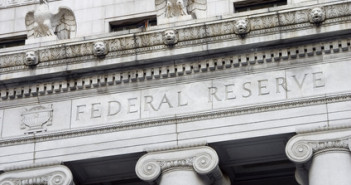Bullard dropped a bomb by suggesting that the Fed should continue QE in October because of worries about global growth, especially those coming from. When a hawk (that gave us a hint on the recent strong NFP) goes dovish, the market certainly listens: stocks jumped and the dollar plunged. While the dollar recovered some ground since then, there is still a lot of uncertainty about the outcome of the October 29th FOMC meeting.
But is continuing bond buying really an option? Here are 5 reasons why the Fed is likely to put all the doubts away and finish its seemingly never-ending QE program:
- Doves aren’t dovish on QE: Contrary to Bullard, the doves do favor the end of QE: Eric Rosengren of the Boston Fed and John Williams of the San Francisco Fed (considered close to Yellen), both said that QE is set to end in October. The FOMC vote saw two hawkish dissenters last time, that wanted to remove the “considerable time” language regarding interest rates. It’s hard to imagine a majority of voters for a suspension of the tapering.
- Inflation is not too weak: The sharp fall in oil prices? That’s actually a good thing that leaves more spending money in consumers’ pockets. Rosengren said that. The Fed focuses on underlying inflation. The Fed’s main inflation measure is the Core PCE Price Index. This stands at 1.5% y/y. Perhaps this level is not high enough to raise rates: a level above 2% would be needed as a minimum. However, this is off the lows of around 1% seen during most of 2013 and the beginning of 2014, or sub 1% seen in 2012. Also wage inflation, despite being unimpressive, stands at 2% y/y. That is not too shabby.
- Jobs numbers are excellent: Contrary to many central banks, the Fed has two mandates: employment in addition to price stability. And jobs look excellent: the recent NFP report not only showed strong gains buy also corrected previous doubts via strong revisions. The Fed closely watches JOLTS job openings that reached the highest since 2001 at 4.84 million, and jobless claims hit a 14 year low at 264K, and this isn’t a one off as 4 week moving average already hit an 8 year low beforehand.
- Credibility: A large part of the Fed’s policy in recent years was built on communications: setting market expectations via forward guidance. Words can substitute action if these words carry weight – if they are credible. The Fed is under criticism that it “works for Wall Street” – responding to every stock market wobble by offering more stimulus. If the Fed changes course now on the background of struggling stocks and on strong economic data, it could erode its credibility.
- Helping Europe: If the main concern for the Fed is really the deteriorating situation in the euro-zone and not stock markets, printing more dollars will certainly not help. Such a move would strengthen the euro, thus making it harder for the euro-zone to claw back some growth and to fight inflation.
The doubts about the end of QE are likely to end and the focus will probably return to the timing of the first hike in interest rates. The dollar had much needed correction in October, and could resume its strong uptrend once the doubts coming from Bullard are cleared.
What do you think?
More:
- Sell EUR/USD On Failure To Break 1.29 – SocGen
- Start Of The USD Rebound? How To Position? – BNPP
- EUR/USD: We Went Long Targeting 1.31; Position For A Bounce – Credit Agricole
